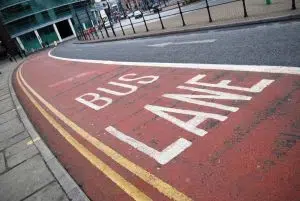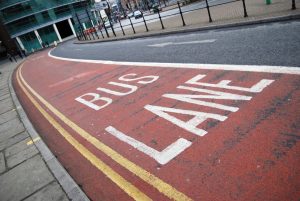
A conversation about shared spaces
 There has been a recognition of the need to consider effective transport alternatives to enable the flow of traffic in larger cities to be improved. A continually growing reliance on motor cars as the preferred mode of transport has occurred, but this is simply not practical in inner-city areas. There is insufficient parking available and the potential for roads to become blocked or even for traffic to become gridlocked, creating extensive delays, is very high.
There has been a recognition of the need to consider effective transport alternatives to enable the flow of traffic in larger cities to be improved. A continually growing reliance on motor cars as the preferred mode of transport has occurred, but this is simply not practical in inner-city areas. There is insufficient parking available and the potential for roads to become blocked or even for traffic to become gridlocked, creating extensive delays, is very high.
For this reason, many city authorities have been looking at ways to improve the access to the city environment by promoting certain types of public transport. One very effective method is to improve the flow of bus services by providing special bus lanes where motor cars are not allowed to travel. This ensures that buses are able to move relatively freely, even during peak times, and take their passengers into the city environment within relatively short periods of commuting time. This ensures there is a reliable and regular service that passengers are able to rely on. By providing this alternative, it is possible to move large amounts of passengers efficiently even during busy peak times.
Bus lanes
This requires careful planning and the need to ensure that there are identified bus lanes to make sure that buses will not be caught in traffic problem areas. These bus lanes may only be for certain periods of the day, such as peak times, or they may be allocated on an ongoing basis, which is particularly well suited for major arterial access points into the city. This will require an adjustment in traffic flow and awareness for other road users as it is creating a separate area on a shared road that is only for specific vehicles.
In order to reduce frustration, and ensure that other road traffic is clear about which lanes are bus lanes, it is important to be able to clearly differentiate them from ordinary traffic lanes. The most effective method is to be able to build separate bus lanes that are completely removed from other traffic. This, however, is not a plausible option for many areas as often the roads are already built and must be shared by buses and other forms of traffic. The best option in these circumstances is for the bus lane to be painted a different colour.
For this method to be effective, it is necessary to have a suitable material that will have longevity and will continue to be seen clearly even after extended usage. Buses are quite heavy vehicles and it is important that the product is able to withstand the wear and tear that will come from the regular flow of buses.
There also needs to be precise painting work undertaken at the sections for the start and the end of the bus lanes to ensure that the flow of traffic is not unnecessarily interrupted by diverging and merging buses.
Bike lanes
 Another area where there is a need for clearly differentiating lanes is bike lanes. Although this method of transport will not necessarily offer the same level of movement capacity as free-flowing bus traffic, it is a mode of transport that has been promoted by many authorities as a valuable and useful alternative for many people, particularly those who do not have far to travel to work.
Another area where there is a need for clearly differentiating lanes is bike lanes. Although this method of transport will not necessarily offer the same level of movement capacity as free-flowing bus traffic, it is a mode of transport that has been promoted by many authorities as a valuable and useful alternative for many people, particularly those who do not have far to travel to work.
A major consideration for cycling is the sharing of the roadway with other vehicles. Cyclists are not able to travel at the same speed as other traffic. They are also at much greater risk if there is an accident. It is important that where possible there is a clearly differentiated space for cyclists to reduce the potential for incidents to occur.
By creating cycle routes it is possible to ensure that many people will be able to exercise and travel to work without adding to traffic problems. Bicycling safety is an important consideration; there may be areas where cyclists have separate paths which makes it a very safe option. The Dutch even created a cycle path that used luminescent paint, so that it would glow in the dark.
However, where cyclists and other road traffic need to share the same road then it becomes more of an issue. Where identified cycling routes are created there has been a move to have clearly marked bike lanes which are of a suitable size to allow cyclists to ride a safe distance from passing traffic. This also allows other traffic to be clear about the areas where cyclists will be travelling and reduces the likelihood of traffic moving into those cycle lanes. If the bike paths are sufficiently wide, they will potentially provide an improved degree of safety for the cyclists and along with suitable signage should help them with easier commuting travel.
Requirements to ensure traffic flows
To be able to effectively undertake this level of road marking activity, it is important to understand the environment that needs to be marked, the level of traffic flow for that area, and also the type of marking material that is going to be most effective. For many authorities, there is also the ongoing issue of costs for the initial installation and then there are ongoing maintenance or repainting costs that must be considered. Ensuring that these lines and lanes continue to be clear and easy to see must be an important consideration. They will ensure that traffic flow continues to improve, and also ensure that there are suitable levels of safety.
It is a responsibility that any authority associated with this work must take seriously. To be able to ensure that suitable work is undertaken it is necessary to find an experienced and knowledgeable organisation. This involves selecting a company that has been undertaking this work previously, that has an understanding of the type of marking materials that are most effective, and who will be able to complete the work while accurately following the plans and guidelines.
There is a range of requirements for working in this environment around safety and consistency. Having an organisation that not only understands these requirements but constantly stays up to date with industry developments will ensure that the best possible service will be delivered.
Contact us today
If you are considering a project that will require appropriate road marking for bus lanes or bike lanes, then it would be beneficial to contact one of the professional technical advisors at Mainliner by calling (03) 9308 2732 today. They will be able to provide you with insight into the technical issues that you could face as well as the range of coverings that you are able to use for the project.


